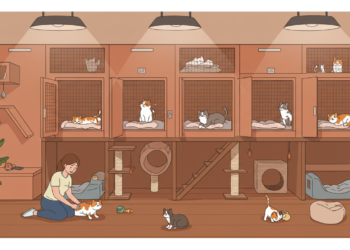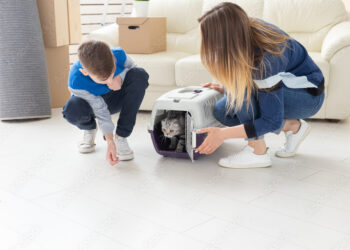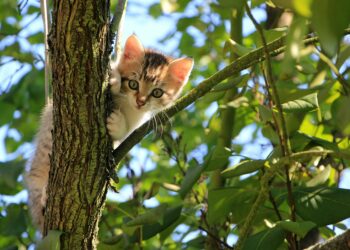Did you know that your cat can get high? Catnip or catnip is a harmless stimulant that you can buy at the pet store or grow yourself. Only sixty percent of cats have what it takes to enjoy this herb. The active ingredients only reach your cat’s brain if it contains a certain gene.
What is catnip?
Catnip (also known as nepeta or catnip ) is a plant belonging to the Labiatae family that grows naturally in Europe, Africa, and Asia. The plant has triangular, serrated leaves that exude a menthol scent and in summer it adorns itself with lavender-blue flowers.
There are more than two hundred species of which only a few can grow in our climate.
Since the 15th century, it has often been used in homeopathic remedies for humans. In fact, before tea was imported from the east, nepeta was the most consumed tea in Europe.
Does your cat react to catnip?
Only sixty percent of all cats get a catnip trip. Even lions and tigers, for example, are known to love catnip. The sensitivity is hereditary; cats need a special gene for it. Young cats and kittens are generally less open to it and interest increases with age.
Only experience can tell whether or not your cat will go crazy for it. So sprinkle a little catnip (dried or not) in front of your cat’s nose and see what happens. If your cat has not inherited the catnip gene, nothing will happen. If she does, she will be in a blissful state after a few seconds.
The cat dramatically meows to roll through the herb, she stretches and stretches over it, rubs her nose in it, and looks perfectly happy. The show lasts no more than ten minutes and it is recommended to leave your cat alone in the meantime.
She is away from the world for a while and even the sweetest cat can show her claws at a catnip moment. To avoid quarrels, catnip should not be given to multiple cats at the same time.
Reading suggestions; The Coat Care Of Cats By Breed
Active ingredient
Catnip contains nepetalactone; which is a substance that the plant produces against insects. It is believed that this substance has the same effect as pheromones in felines. One of the active ingredients of nepeta ( actinidin ) is also found in valerian, which is popular with cats. So far, no addiction or toxicity could be identified in the cat. Catnip is therefore not poisonous.
Buying and growing catnip
Dried catnip
You can easily buy catnip in dried form. It is best to store these in the freezer because their strength disappears due to UV radiation. Dried catnip is also used in cat toys.
catnip oil
In addition to nepetalactone (40%), catnip oil also contains oils from common plants such as citral, geraniol, citronellol, nerol, and lime.
catnip spray
Spray catnip is ideal for spraying old toys or scratching posts to make them attractive to the cat again.
Reading suggestions; 200+ Unique Female Cat Names for Your Cute Companion
catnip bubbles
With a jar of catnip bubbles, you can make bubbles that contain catnip. The cat will try to catch the bubbles with pleasure.
Fresh catnip
You can grow fresh catnip in the garden or as a houseplant. The plant grows easily, especially in full sun, and in the garden, you have to be careful not to overgrow the other plants. The best catnip is the wild kind, Nepeta Cataria, but Nepeta Faassenii is easier to find.
You can give fresh catnip in its natural, undried form to the cat or mix a few leaves into its food. Cold catnip tea is also popular. Do not confuse fresh catnip with the plants sold in pet stores as cat grass. In reality, those are barley, oats, or wheat germ.









